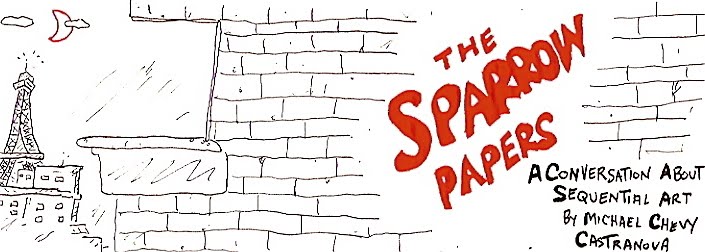 |
| Decorah, with sudden burst of sun ©Michael Chevy Castranova 2016 |
The day after
attending a wedding last weekend in Decorah, in northeast Iowa — a town known
internationally for the drama of its internet-cam eagles — I happened upon
Dragonfly, a small bookstore downtown. On display inside were the three volumes
of the “Zita the Spacegirl” graphic novel series.
These adventures,
written and drawn by Ben Hatke from 2010 to 2014, mix a little Star Wars, some
Flash Gordon and Buck Rogers, more than a dash of Alice in Wonderland and sizable doses of charm
and whimsy. Lots of running, lucky narrow escapes and myriad weird-looking
creatures and robots.
The protagonist is
a feisty young girl who looks a lot like a 21st-century version of Ed Vedier’s “Little Annie Rooney” newspaper strip and acts with the verve of plucky young
adventuress throughout time.
It’s a fun story
of Zita as she grows into her hero status over the course the tale. But the
drawing itself is what I really lured me — deceptively simple, the characters
move easily, and their emotions quick to decipher.
And there’s a
great pun when hearts attack a planet, in book two, “Legends of Zita theSpacegirl.”
You should take a
look.
Which brings us to
another plucky adventurer, though in her early 20s I’d be reluctant to call her
still a girl. Tyler appears to have seen off the Chancellor — again — but now
she has to fulfill her part of the bargain she made with Dargelos.
That will entail
heading directly into Rongeur-occupied Europe, in 1927. It’s an altered history
— again — and one in which her enemy knows her well and likely has the table
set — ahem — for her coming.
Check out the
adventure of “Slipped” at slippedcomic.blogspot.com.
Come on, it’ll be
fun.
 |
| © Michael Chevy Castranova 2016 |




















